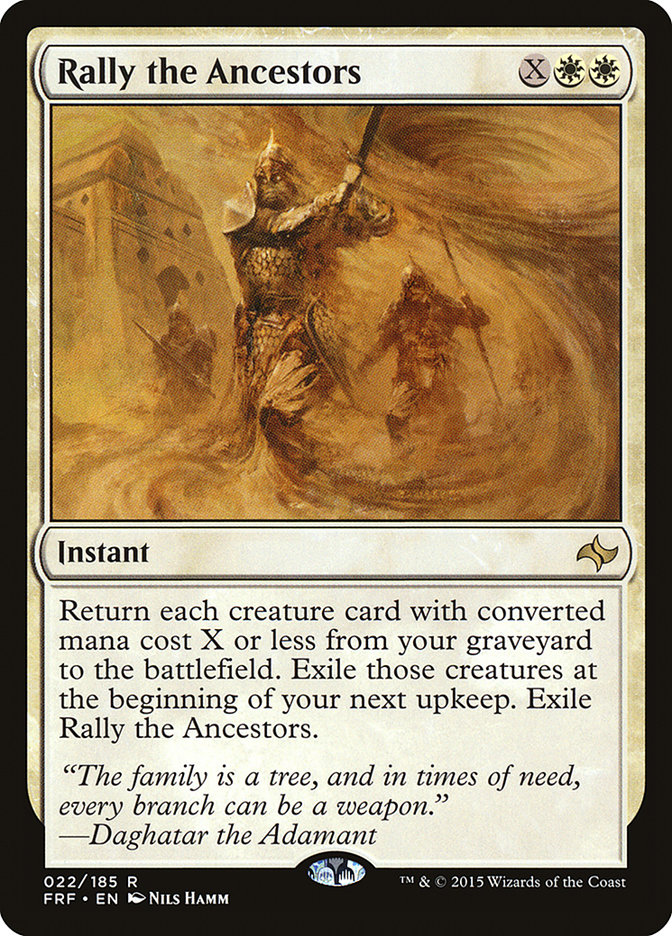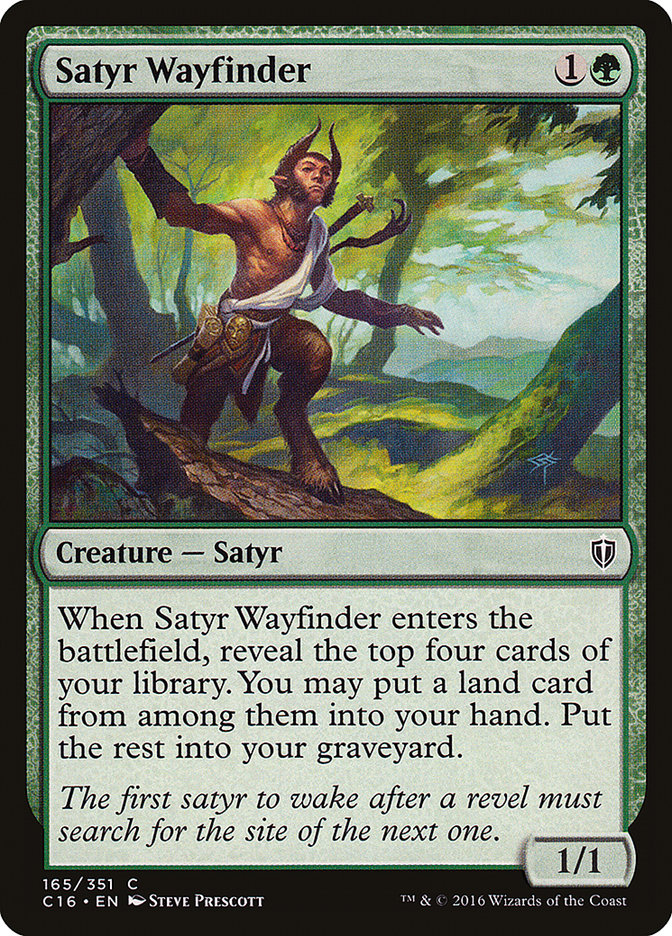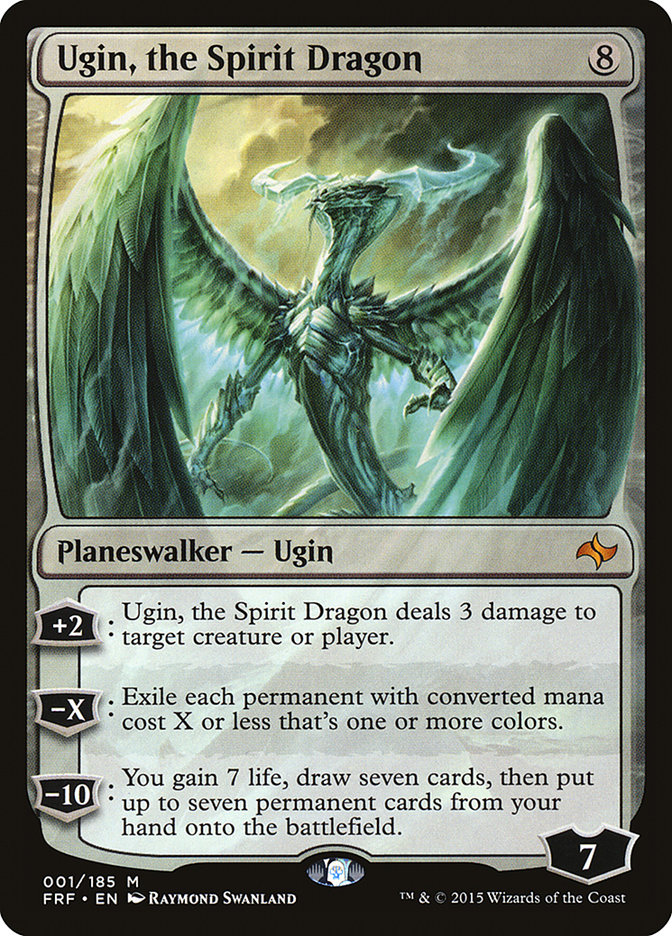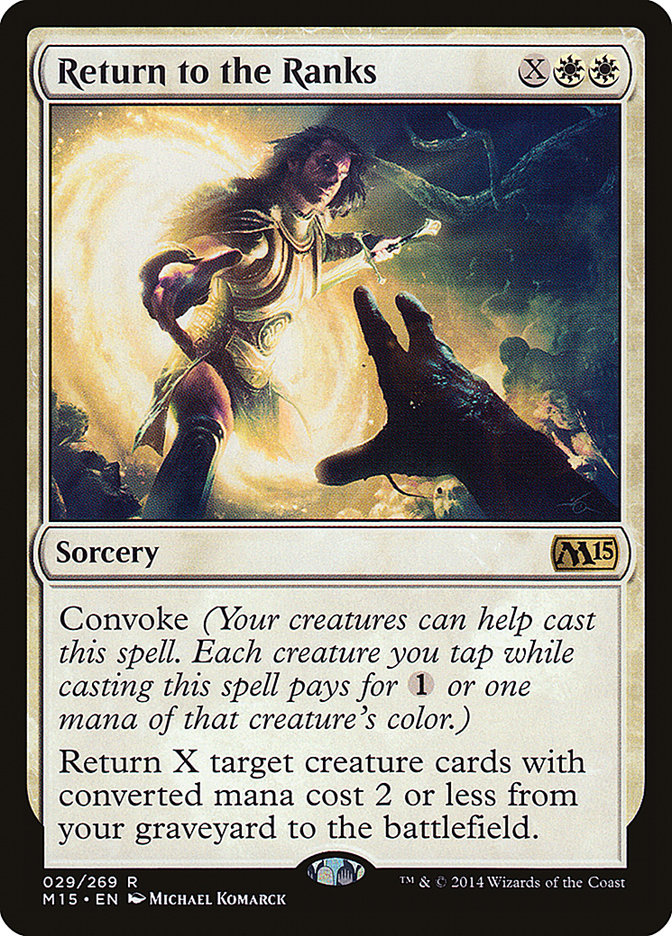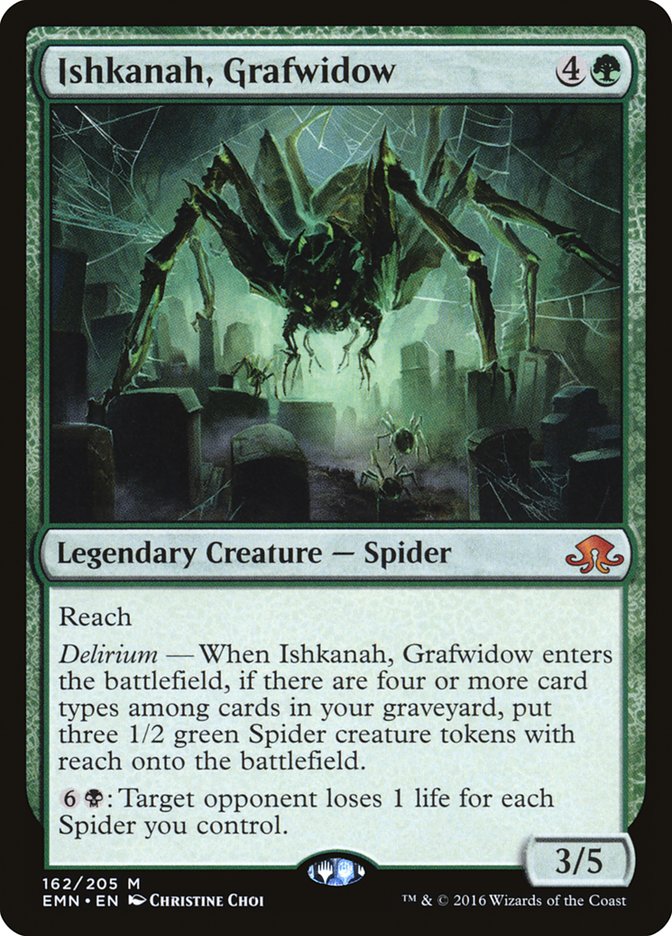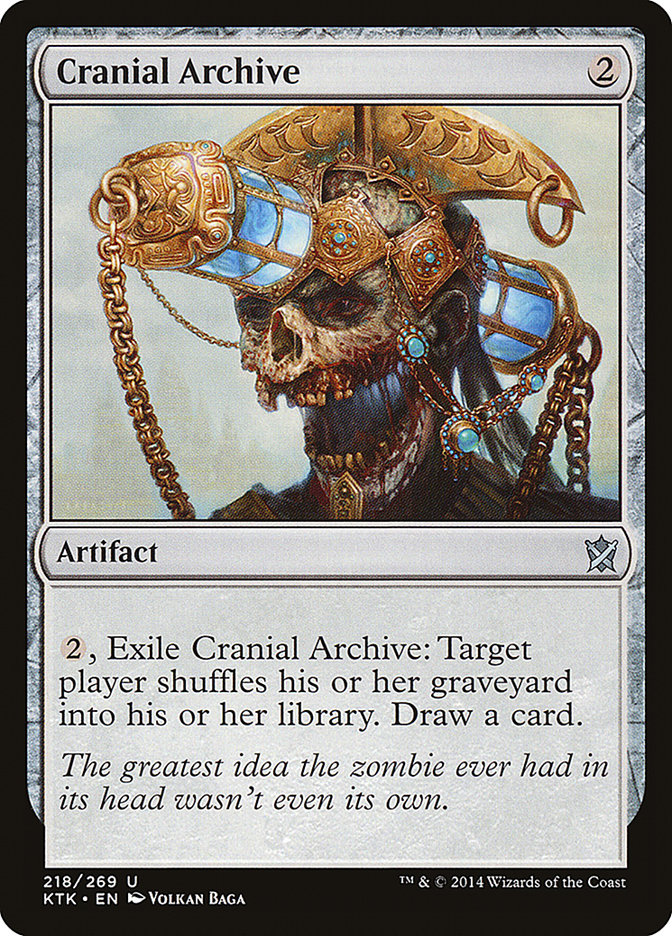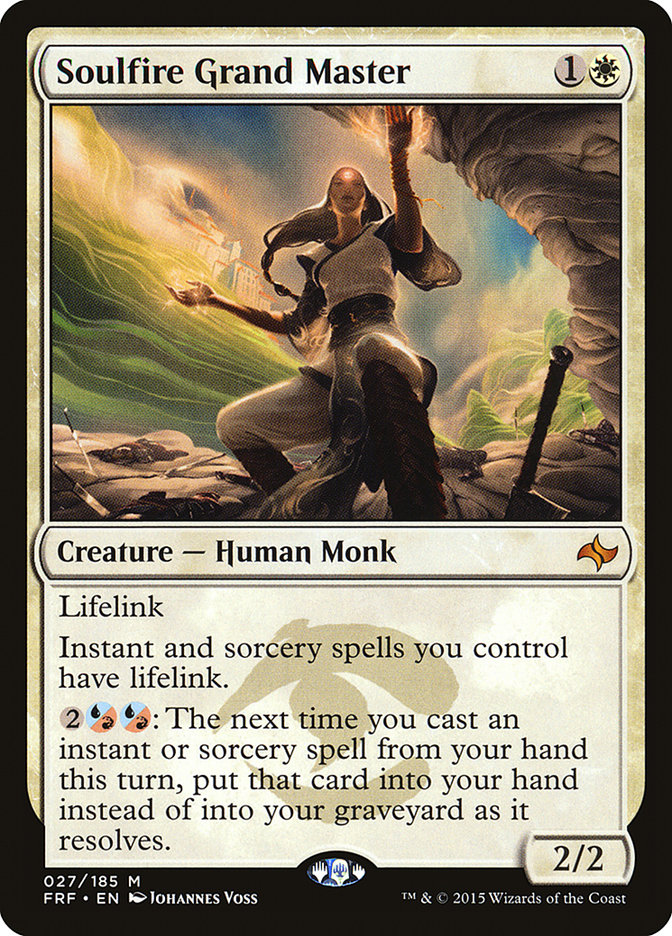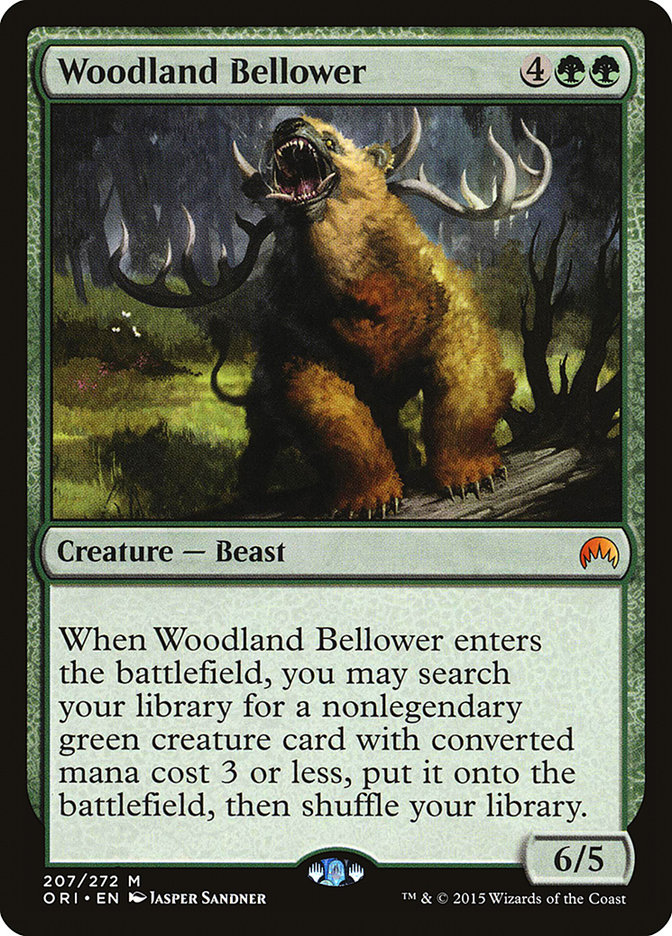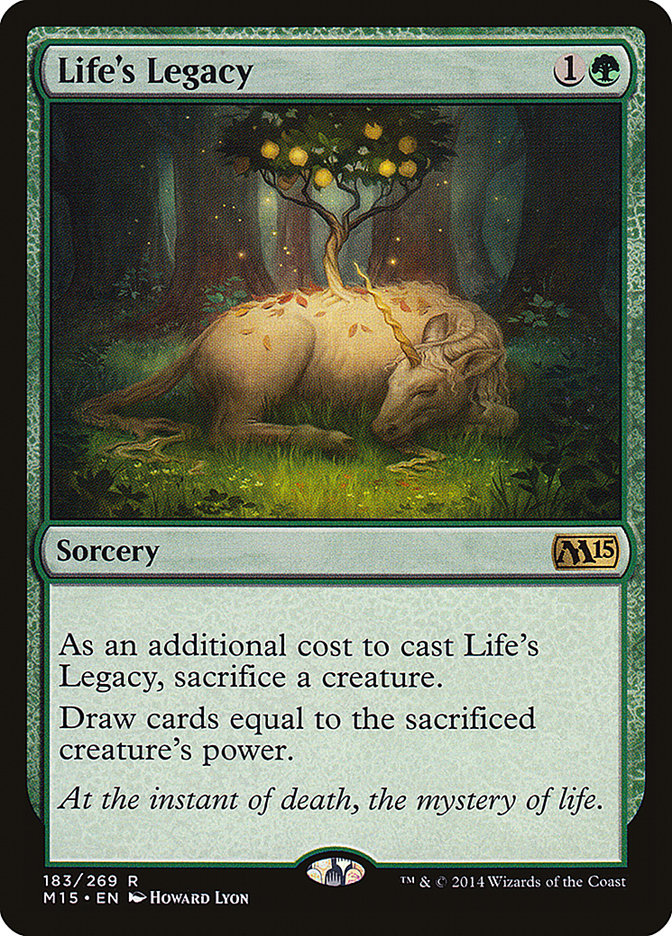I hope that you’ve all had a lovely and safe holiday. We still have just a bit more of Magic drought to go though. #GPLouisville is this weekend, so here’s some advice: I think Lands is the best deck, but I have no experience with the archetype. If I don’t adequately pick the brains of Daryl Ayers and Tom Ross, I’ll probably pass on playing it. That would leave me looking at Gerry Thompson’s Grixis Control or something like Miracles or Shardless Sultai. Solid, but relatively unexciting choices.
In the meantime, I’m sure you’re all fairly tired of the various discussions regarding the problems of various formats and theoretical fixes. I do think a dialogue is important, but at a certain point it’s probably just best to wait out the last couple of weeks to see the actual banned and restricted announcement and get excited about Aether Revolt.
So I guess that leaves me with building some Frontier decks.
Sure, why not?
If you’ve been hibernating, Frontier is a community-led format utilizing all sets from Magic 2015 forward. This week I’m not particularly interested in what the catalyst is that is driving buzz to the format, but needless to say it’s the hottest topic in Magic.
Is it your alternative to Modern? You’re sick of Standard? Who cares! Let’s just tackle it.
Todd Stevens did a nice introductory piece last week about many of the more stock and aggressive decks that folks are playing, and I’ll be doing a little overlap work here as well since I have my own twists to add to decks.
I should also note that my Battle land plus fetchland mana base skills are probably a bit rusty, so keep that in mind along with the fact that Frontier mana bases are always likely subject to improvement.
What feels like a long time ago, Gerry published this piece discussing the implications of such mana bases, and it warrants a read if you’re getting into the format or simply interested in developing the way that you approach mana in deck building.
An Overview
Needless to say, it’s been a while since I’ve scoured through the visual spoiler of 2015 and Khans Block. After the aforementioned and looking at most of the Frontier resources I could easily find, my baseline impressions are as follows:
Rally the Ancestors is likely public enemy number one. It isn’t clear to me exactly how to build it – most folks are content to simply emulate the old versions that were in Standard with a different card or two, but I’m sure we can do better, and even much better than my version, which we’ll get to shortly.
The fact that Emrakul decks can’t completely annihilate this strategy with Mindslaver due to the built in “opponent” clause on Zulaport Cutthroat definitely strengthens this archetype a great deal. There’s still very little effective hate against the archetype either.
Unsurprisingly, Jeskai Black takes my pick as default best deck. It already had a solid-good matchup against Rally when they did battle in their respective Standard format due to the strength of Kalitas, Traitor of Ghet, but now Jeskai Black has received more power upgrades and is still one of the most flexible strategies in terms of being malleable towards any specific metagame.
Satyr Wayfinder is the card that “most improves a bunch of archetypes.” This is basically my ineloquent way of saying that Dig Through Time and Treasure Cruise are very obviously still unfair. Wayfinder was always great with these cards, but the mana at that snapshot of Standard didn’t always make playing the cards together a particularly easy task.
This card is ridiculous and overpowered in this format. Shocking.
Satyr also naturally powers up Rally and lends itself to a bunch of other types of decks, which again we will be covering.
I suspect that Emrakul, the Promised End is good, but not great. Again, Rally is a problem, but so is the raw efficiency of Jeskai Black should they be interested in fighting Emrakul decks. Disdainful Stroke is a very real card!
On that note, it would be my pick that Ugin, the Spirit Dragon is the best Aetherworks Marvel/natural ramp finisher.
Ugin was always a bane of Rally and a huge threat to everyone else, but it also plays beautifully with Aetherworks Marvel.
All of these various good stuff Siege Rhino/Dragon + removal spell decks just don’t interest me. There’s probably nothing wrong with them, but I just find them boring. This isn’t necessarily a useful commentary on the format, but I just don’t get anything out of building them and I always found the strategies to be relatively weak to Rally the Ancestors throughout their tenure in Standard.
For the sake of it, I would say that the pillars of Frontier are:
Dig Through Time/Treasure Cruise
Jace, Vryn’s Prodigy
Atarka’s Command
Decks
Creatures (27)
- 4 Nantuko Husk
- 4 Elvish Visionary
- 4 Satyr Wayfinder
- 1 Grim Haruspex
- 3 Sidisi's Faithful
- 4 Jace, Vryn's Prodigy
- 4 Zulaport Cutthroat
- 1 Ayli, Eternal Pilgrim
- 2 Primal Druid
Lands (23)
Spells (10)
Sideboard

This is more of an exercise in “this is how you could start to evolve Frontier Rally” rather than claims that this is an optimal list. I’ve seen decks with more three-drops and older hits like Catacomb Sifter alongside Spell Queller (which is a really cool addition that might be very powerful).
Satyr Wayfinder is a new staple, and it is possible that you need Murderous Cut in the main to effectively fight Kalitas and Anafenza, the Foremost.
All of that aside, Return to the Ranks looks to be a very powerful option for quickly comboing an opponent, and that is what this particular list is built around.
With the Wayfinder to turbo charge your efforts to accumulate creatures on the battlefield and in your graveyard, I imagine that it should be fairly elementary to piece together drain kills with Zulaport Cutthroat. It’s also just easy to accumulate a ton of value with Return to the Ranks alongside Jace and friends. The fact that it can be easily cast and then “flashbacked” gives the deck even more staying power – hence my effort to play only the bare bones number of three-cost creatures. This technically makes Collected Company weaker, but we aren’t really making too many sacrifices in power given the assumption we aren’t directly disrupted.
Yes, I do love Primal Druid more than anyone else, and yes maybe the slight adjustments in the mana to accommodate it aren’t worth it. Though the fact that it gives you a road block against aggressive decks that can surge you ahead is quite appealing in combination with its synergy with Sidisi’s Faithful and Nantuko Husk.
Creatures (16)
- 4 Satyr Wayfinder
- 3 Emrakul, the Promised End
- 3 Wretched Gryff
- 2 Elder Deep-Fiend
- 1 Ishkanah, Grafwidow
- 3 Primal Druid
Planeswalkers (2)
Lands (21)
Spells (21)

As one might assume, this is the first deck I put together for this article. While I went into looking through the spoiler with self-assurance that this archetype would come together beautifully, I’m not actually sure if various emerge shells are doing anything that rivals the power of the other top Frontier decks. Rally can combo straight through us, Jeskai Black probably packs an adequate amount of disruption, and it’s fairly likely that Atarka Red can just kill us without a super quick Kozilek’s Return.
Then again, maybe I’m underestimating this deck. Satyr Wayfinder is another piece of redundancy that makes achieving delirium and powering up Emrakul a breeze, and it’s fairly easy to go easy on support cards like Ishkanah, Grafwidow in a wide open format like this. I even considered a copy of Hornet Queen but ultimately cut it.
My tech cards might be a bit wonky, but Cranial Archive both functions as an artifact to mill over in addition to some anti-Rally and Jace hate. Ugin, the Spirit Dragon is fairly difficult to find except through Vessel of Nascency, but this deck is phenomenal at ramping. Plus, it gives the deck another huge card that can win games on the spot.
Probably my favorite development in the end game of last Standard season was my Temur Emerge sideboard, so I’ve largely just emulated that even though the metagame is likely to be completely different. That said, diversifying one’s threats and looking to complement them with additional ramp cards like Explosive Vegetation is still powerful.
Creatures (12)
Planeswalkers (2)
Lands (26)
Spells (20)
- 2 Utter End
- 1 Murderous Cut
- 2 Disdainful Stroke
- 2 Dig Through Time
- 2 Roast
- 2 Kolaghan's Command
- 4 Fiery Impulse
- 3 Painful Truths
- 2 Collective Brutality
Sideboard

Jeskai Black just looks so filthy to me. While it’s true that there are a million different ways to build the deck and so many small tweaks that can be made given the card pool and freedom with the mana, I’ll never understand those that regress back to Mantis Rider. Call me a purist.
This is, and always was, a control deck that got gifted one of the most outrageous win conditions I’ve ever seen in Torrential Gearhulk + Dig Through Time.
Maybe if this format stays niche, nobody will notice how absurd this is.
Liliana, the Last Hope can backdoor you into any spell with Jace, Vryn’s Prodigy or the aforementioned Gearhulk, and we haven’t even talked about Kolaghan’s Command yet. There’s also the most efficient spot removal, Painful Truths, and plenty of life gain to go around in Soulfire Grand Master.
This deck just has it all. Maybe you need Crackling Doom just to cover your bases against Dragonlord Ojutai, Emrakul, and help against Gideon, Ally of Zendikar, but that’s largely semantical details. The core of this deck is hyper efficient and powerful to match.
Creatures (28)
- 1 Sylvan Messenger
- 1 Leaf Gilder
- 4 Elvish Visionary
- 4 Elvish Mystic
- 1 Reclamation Sage
- 2 Nissa, Vastwood Seer
- 1 Woodland Bellower
- 4 Dwynen's Elite
- 2 Gnarlroot Trapper
- 4 Shaman of the Pack
- 4 Servant of the Conduit
Lands (21)
Spells (11)

I don’t have a super interesting list compared to what I’ve seen as “stock,” but it appears that Collected Company isn’t necessarily standard, which is odd to me. I get that there is appeal in chaining Sylvan Messenger into Woodland Bellower into Shaman of the Pack with Eldritch Evolution, but we can simply play some of those cards alongside Chord of Calling.
It took me a second to actually realize why Bellower was in the deck originally, but with Panharmonicon it essentially reads: “trigger Shaman of the Pack four times,” which is pretty awesome.
Creatures (13)
Planeswalkers (2)
Lands (23)
Spells (22)

Another one of the first things I did looking through the spoilers was try to spot powerful artifacts for Metalwork Colossus. The search came up a bit short, but I think there are a few interesting inclusions here.
We’ve already seen a lot of these cards in other decks, but they all play a role: including Satyr Wayfinder being an incidental way to dig into Colossi. Having to rebuy them from the graveyard isn’t always the cleanest way to get moving, but it certainly works – and it does so quite well in conjunction with Darksteel Citadel.
Life’s Legacy is probably approaching a bit too cute, but drawing ten cards is certainly nothing to scoff at. I can’t imagine that you’ll need too much more from there to figure out a way to close the game, especially now that the deck has access to Ugin, the Spirit Dragon.
This next deck looks a bit less functional but utilizes many of the same powerful cards. It also goes to show that there are likely many ways to build “dedicated” Aetherworks Marvel decks.
Creatures (10)
Planeswalkers (4)
Lands (22)
Spells (24)

It’s true that there are very few hits for Torrential Gearhulk, but I’m not exactly convinced that matters. Having another backdoor route to find Aetherworks Marvel and land Ugin, the Spirit Dragon should be more than adequate for winning most games, and I love the fact that Glint-Nest Crane can put this sequence into motion.
Creatures (8)
Planeswalkers (4)
Lands (22)
Spells (26)

This is more of an actual dedicated ramp deck that incorporates the Marvel package. It might not actually be true that this combination of cards is “free” and that it’s better to focus more on the four-into-seven route with cards like Explosive Vegetation and more Hornet Queen and World Breaker, but this is likely where I would start. Again, these decks classically had a strong matchup against Rally the Ancestors, so it makes sense to explore them.
What is also worth noting as a potential weakness in building the deck in this manner is that it is quite vulnerable to Kolaghan’s Command. Explosive Vegetation has a huge edge over Hedron Archive in this manner, but I felt that since we aren’t interested in playing Shrine of the Forsaken Gods nor do we have a large amount of basics in the deck, that this was a better approach.
My final deck was built off a very cool deck I saw doing some research for this article. A heavily token based Jeskai Ascendancy deck with Cryptolith Rite to full combo kill its opponent with Crater’s Claws. I took a less extreme approach in regards to the token creators and got here:
Creatures (6)
Lands (22)
Spells (32)
- 4 Dragon Fodder
- 4 Stoke the Flames
- 4 Treasure Cruise
- 4 Hordeling Outburst
- 2 Dig Through Time
- 4 Jeskai Ascendancy
- 3 Wild Slash
- 3 Cryptolith Rite
- 4 Cultivator's Caravan
Sideboard

The original list eschewed Satyr Wayfinder and was more heavily reliant on early white mana for various “Dragon Fodder.” Again, I like incorporating Wayfinder due to how effective it is at powering up the Delve draw spells, which are huge work horses in this deck.
I also included a lot more interaction, and am using Reckless Bushwhacker as my “combo kill” instead of Crater’s Claws. With our interaction being various burn spells, it should be relatively simple to kill an opponent from a very low base with the Bushwhacker instead of being forced to go super deep into our deck to generate tons of mana. The Goblin also gives us the option of functionally going infinite later in a combo turn by enabling any sick creatures to become mana producers in combination with Cryptolith Rite.
My final addition was Cultivators Caravan. Not only is the Caravan a mana fixer that can function as a healthy attacker, but it can make a fine Fatestitcher impersonation once the Ascendency ball gets rolling. It’s true that something like Rattleclaw Mystic could largely have the same functionality, but Cultivator’s Caravan is a lot closer to a card like Sylvan Caryatid in how difficult it is to remove from the battlefield.
I can’t say what the future has in store for Frontier, but regardless this was a nostalgic and fun exercise. It’s unlikely that I’ll be touching the format for the foreseeable future with Aether Revolt’s release right around the corner and the corresponding Pro Tour, but stranger things have happened.


